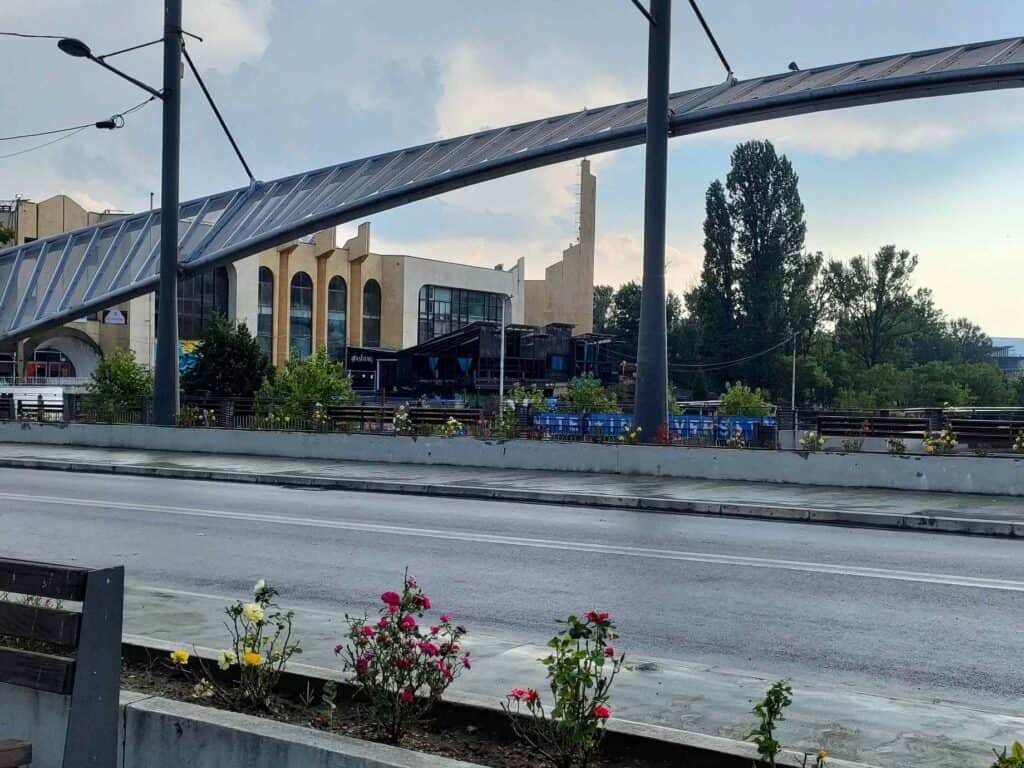This article may contain affiliate / compensated links. For full information, please see our disclaimer here.
You might hesitate whether to visit Mitrovica, the divided city in Kosovo at all, and if you should stay there overnight as this is the hotspot of the Albanian-Serbian conflict. I spent a night on the Serbian side. Although apart from a few monuments, Mitrovica is not as beautiful as Prizren, it was a very insightful trip and helped to get a better understanding of Kosovo. Thus, I could immerse myself in the vibrant nightlife, observe the people, and enjoy a meal in one of the many pleasant restaurants. If you are also like me, who travels to learn not only to see picturesque places, it is definitely worth visiting.
Read also the ultimate Kosovo travel guide + itinerary
How to spend one day in Pristina
Is Mitrovica safe?
While most of Kosovo is now safe, Mitrovica and the region to the north with a concentration of Serb population is the most politically tense place in the entire country. Political protests happen regularly here. However, if you stay away from demonstrations, it should be safe for you as a traveler. Nevertheless, ask around before going there and be up-to-date with the situation. While it is no problem for a traveler to go to either side, it is very different for locals who probably face harassment if they cross the bridge dividing the city and address somebody in the wrong language.
When the Kosovo war ended in 1999, peace did not happen overnight. Murders were still common in the following years and gradually decreased partly because of the physical separation of Serbs and Albanians on the two sides of the Ibar River.
However, from time to time, things happen.
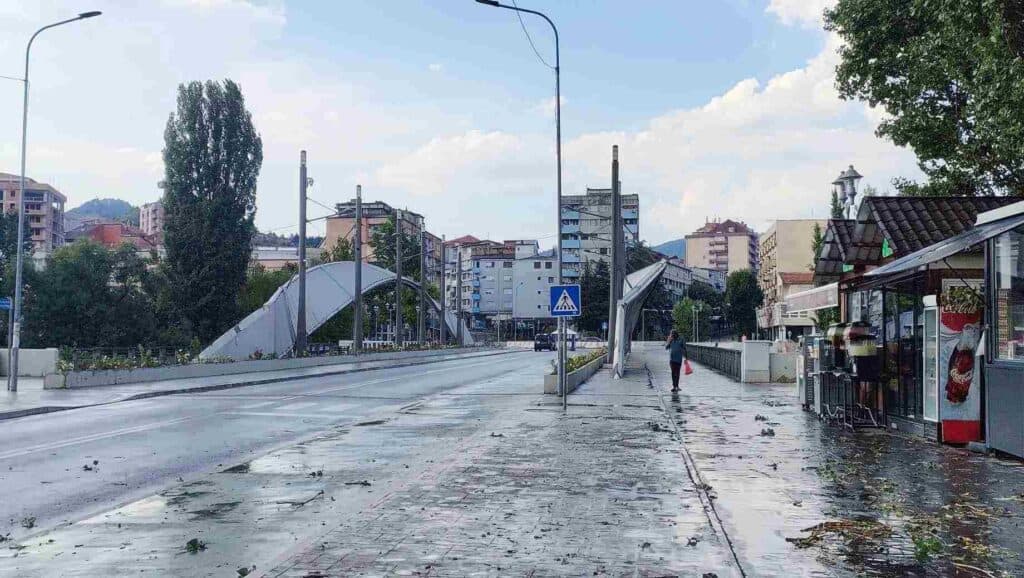
On 17th March 2004, Serbs clashed with Albanians in Mitrovica after three Albanian boys allegedly drowned in the river Ibar while fleeing Serbs. The media falsely claimed that the incident was ethnically motivated, leaving hundreds of people wounded and almost 20 people dead. The violence spread to other parts of Kosovo and turned into the worst violence between the two ethnic groups since the war. Enraged by the events, Albanians set several Serb monasteries and churches on fire.
Book a day trip from Pristina to Mitrovica and Adam Jashari Memorial Complex
In May 2023, there were violent clashes in the north of Kosovo when an Albanian mayor was elected in Serb majority areas after Serb communities had boycotted the elections. The NATO-led peacekeeping force KFOR clashed with Serb protesters, where Italian and Hungarian soldiers were injured.
Taxis probably refuse to take you from one side to the other.
In general, tensions tend to increase at election times, the anniversary of Kosovo’s independence on 17th February, or the Serbian National Day on 28th June.
What you should know about Mitrovica
Mitrovica, where two rivers, the Ibar and Sitnica meet, is one of the oldest settlements in Kosovo. Throughout the Ottoman period, it was a small, average city. Massive industrial development started in the 19th century to exploit its potential based on the lead ore discovered in the area. The mining tradition around Mitrovica dates back to Roman times.
The Trepca Mines and Mitrovica are inseparable. It was a leading factory in Kosovo and, at its height, provided for 70% of Kosovo’s GDP. Mitrovica was a town built around one company. With over 23,000 employees, Trepča was one of the biggest companies in Yugoslavia. Trepça conglomerate was more than a mining complex. Besides mines, it owned battery plants, knife- and cutlery-making plants, and seaside hotels for its workers. Trepça financed the construction of apartments in Mitrovica and Stan Tërg, the Trepça football club, the stadium and various cultural associations.
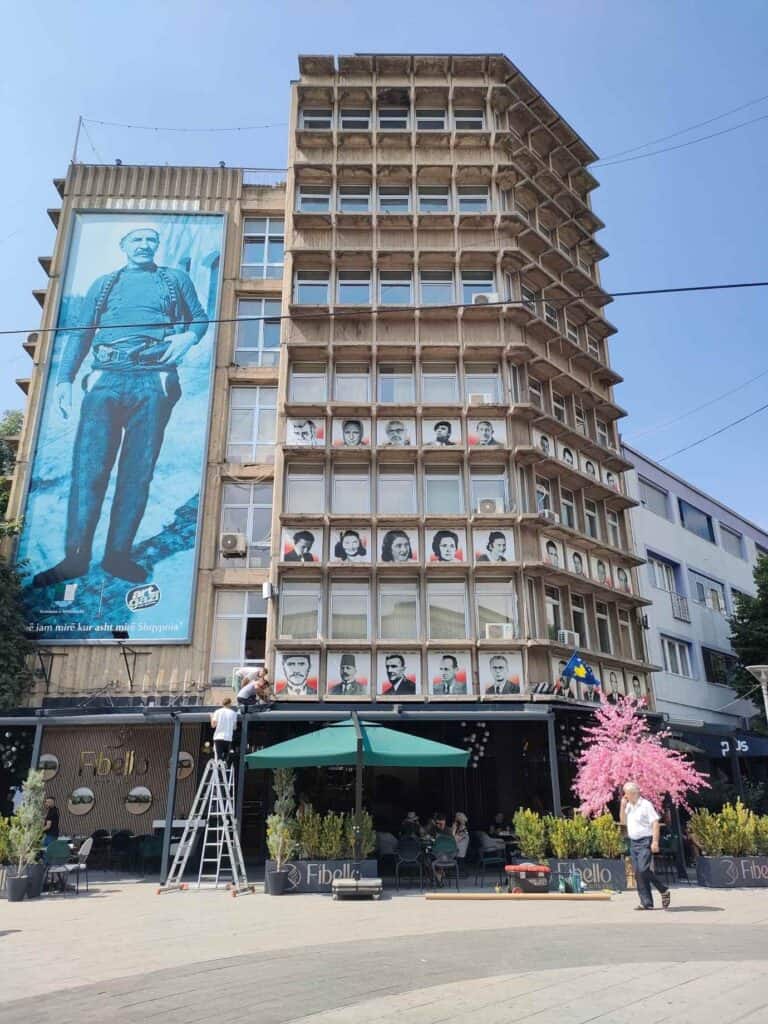
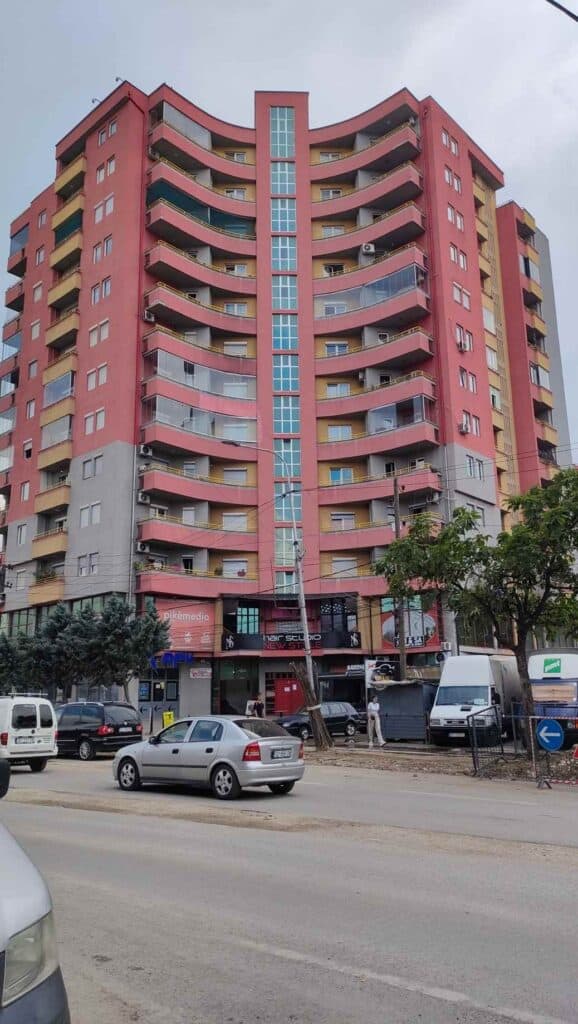
The small city’s population multiplied, especially when the railway line to Skopje was completed and connected Mitrovica to Thessaloniki. Now, its population is approximately 100 000, of which 85 000 are Albanians. Serbs were always in the minority in Mitrovica, even before the war.
However, in the 1980s and 1990s, most of the factories and mines were closed down. The conglomerate’s conditions gradually deteriorated due to the lack of maintenance and investments. When Kosovo’s autonomy was revoked, many Albanian workers resigned, and the miners went on hunger strike.
There is no way to revive the company without foreign financial investment. Since the end of the war, the Trepca mines have never reached their pre-war capacities, and the partition of the city makes it impossible. At the moment, only a small part is functioning.
When the Kosovo War ended in 1999, Mitrovica was divided by the Ibar River, and French soldiers took control. Albanians have lived in the south, while mainly Serbs have occupied the north. However, some Albanians live in the Serbian part along the Ibar River in the Bošnjačka Mahala district. It got its name after the Bosniaks.
For that, it is the only ethnically mixed part of Mitrovica where people from both ethnic groups mingle and do shopping at the same places. Apart from that, Serbs and Albanians are completely segregated, and some have never been to the other side of the river, even if it is just 20 meters away.
During the Kosovo War, the entire district was severely damaged, and the mosque that once stood close to the main bridge connecting the two sides was set on fire and razed to the ground by the Serbs during the war. Most Albanians abandoned or sold their apartments after the war; only some stayed in this area. Crossing the line was too risky.
Book a day trip from Pristina to Mitrovica and Adam Jashari Memorial Complex
Many believed the division was temporary, but as time passed, there was less hope that the town would reunite.
Three bridges are spinning over the Ibar River, but no local buses connect north and south Mitrovica. The well-known New Bridge has a central location where crossing is only possible on foot. No cars are allowed. Some people cross, but it is never crowded.
So, how is life different on the two sides of the river?
When you cross the bridge, it seems you enter a different world on the Serbian side. Numerous Serbian flags appear as a sort of political statement and never let you forget which side you are on. On the Albanian side, it is much less common.
A martyr’s memorial welcomes you on either side, remembering the Serbs and Albanians who died during the Kosovo war.
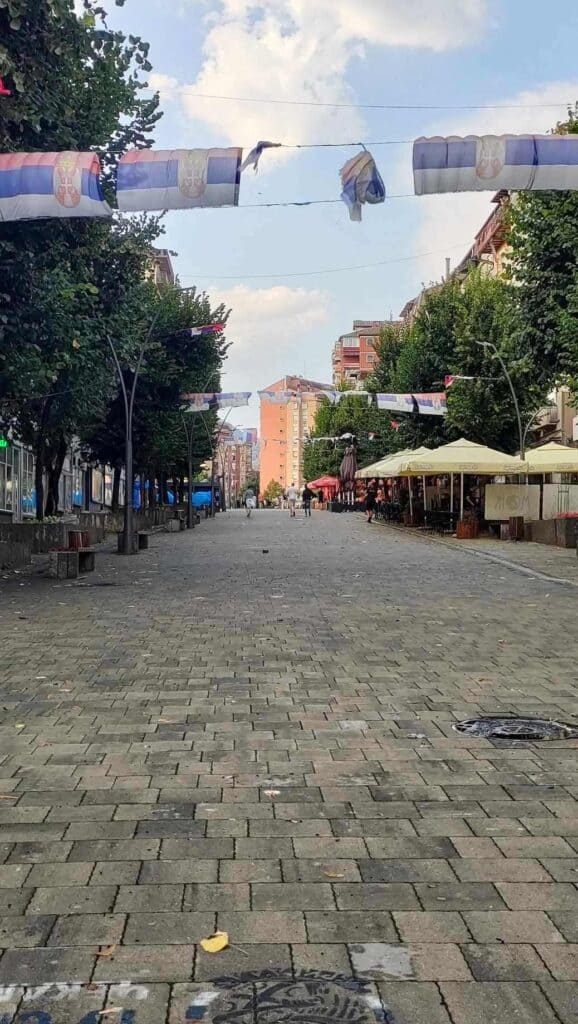
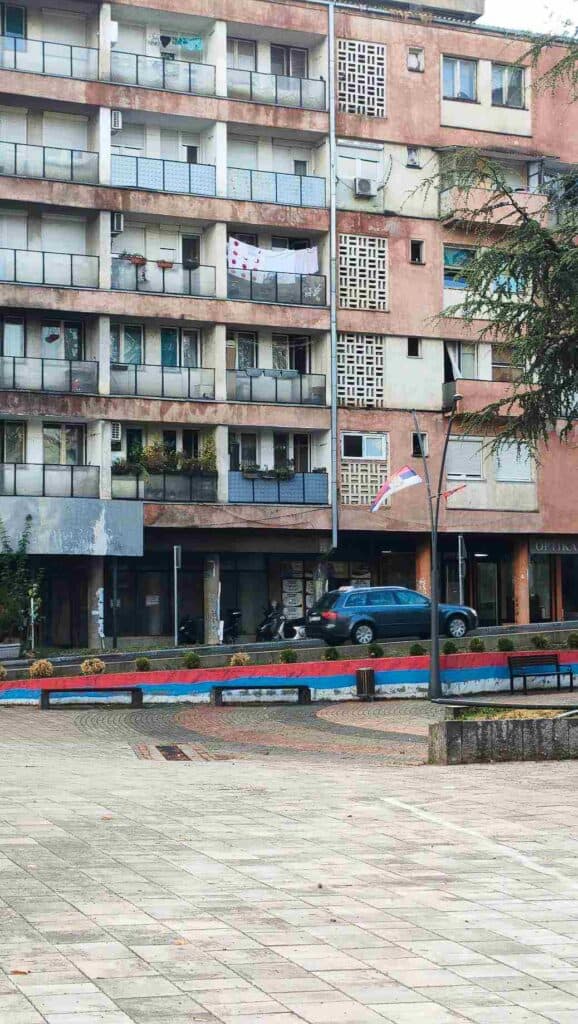
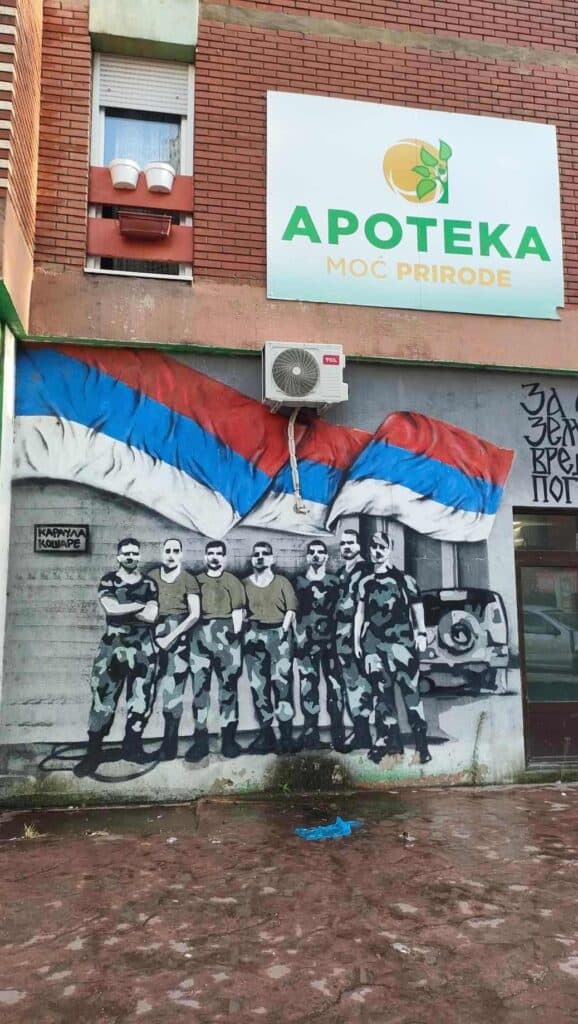
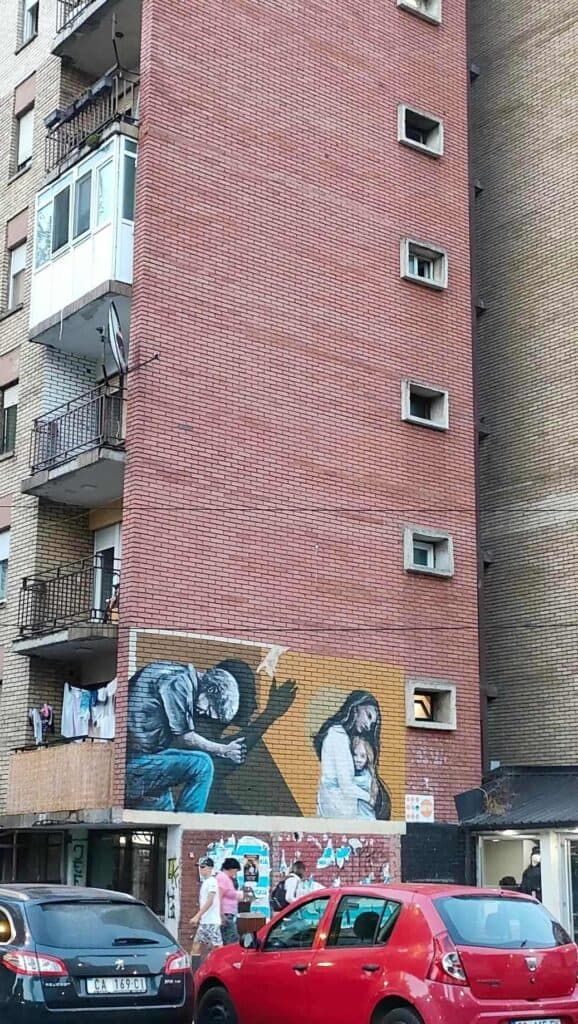
On the south side, people speak Albanian, use Euros, have RKS number plates and Kosovo cell phones. On the north side, people use dinars, Serbian number plates, cellphone networks, and Serbian documents. The north remained de facto under Serbian control.
This is not like Bosnia. Serbs and Albanians never really mingled like the Serbs and Bosniaks, although the Trepça conglomerate that many people worked for played an important role in forging unity. A mix of Albanian and Serbian languages was spoken in the streets, and they were neighbors in socialist housing blocks. However, Serbs were always much in numbers.
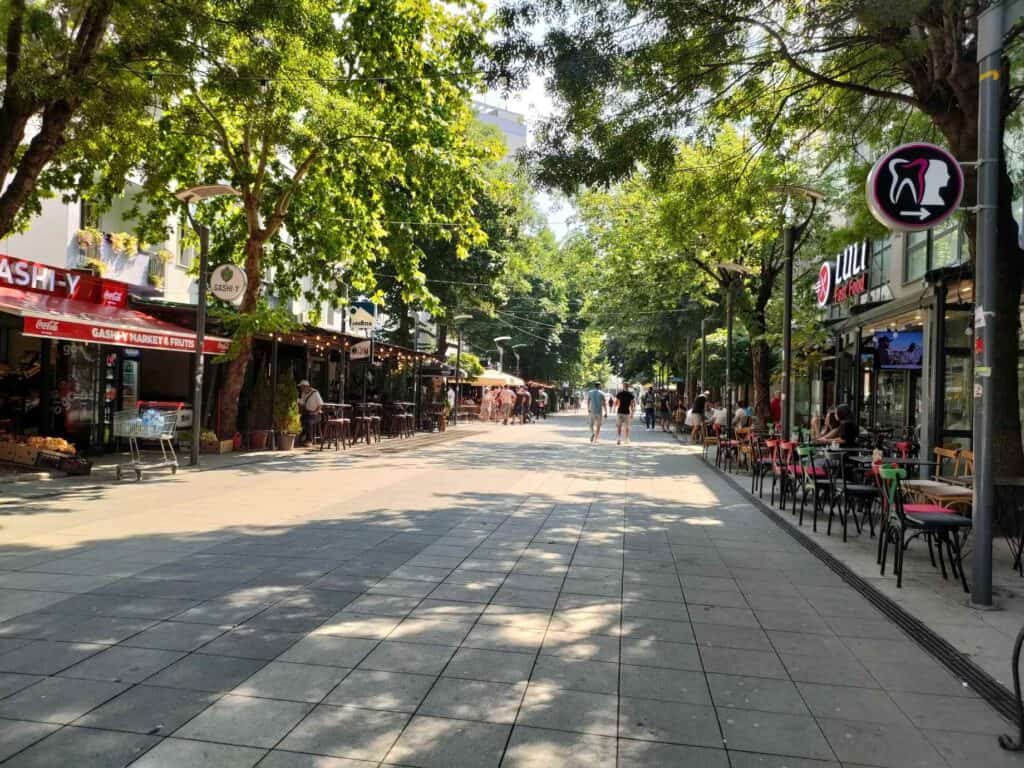
Most Serbs did not flee Kosovo but stayed because of the financial benefits, as apart from their regular salary, the Serb government has paid extra compensation to ensure the Serb presence. Some commuted between family in Serbia and job in Kosovo. Some returned and left again after the violence of March 2004.
Since 2013, a separate North Mitrovica municipality was created with a Serb majority population, but it is much smaller than the Albanian part.
The issue over the number plate
Since the end of 2022, Kosovo has refused the Kosovo Serbians using Serbian number plates. It is a response to the fact that Serbia does not allow Kosovo number plates. These either had to be covered or replaced with the Serbian. Kosovo now requests the same. But Kosovo’s new decision in 2022 flared up tensions between the two minorities again. Finally, with international mediation, the dispute has been solved so that the license plates’ country code have to be covered with a white sticker, and they get a fine. It applies to Kosovars going to Serbia and Kosovo Serbs driving in Kosovo. Some who don’t have a Serbian one even drive without a number plate.
What to see in Mitrovica?
As mentioned, Mitrovica is not the most attractive city in Kosovo. Still, there are a couple of places to visit, and it is more about getting first-hand experience about the divided city of Kosovo with the parallel lives of Kosovar Albanians and Serbs.
Isa Beg (Bajram Pasha), the biggest mosque of Kosovo – Albanian side
This impressive, relatively new mosque was donated by the municipality of Bayrampaşa in Istanbul. It was built exactly where the old Isa Beg Mosque once stood but was badly damaged during the war. The construction of Kosovo’s mosque was a controversial issue for being financed by Turkey.
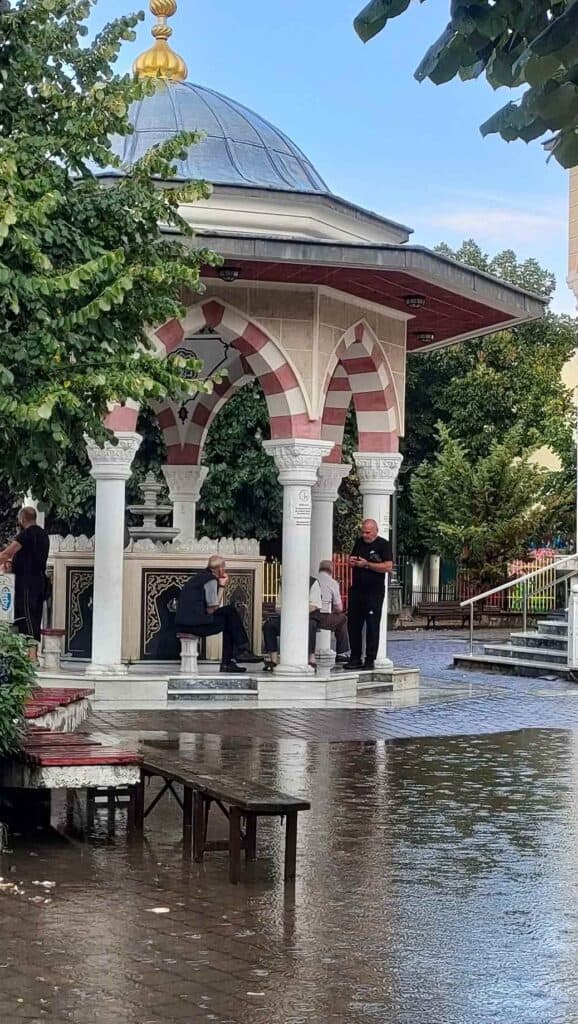
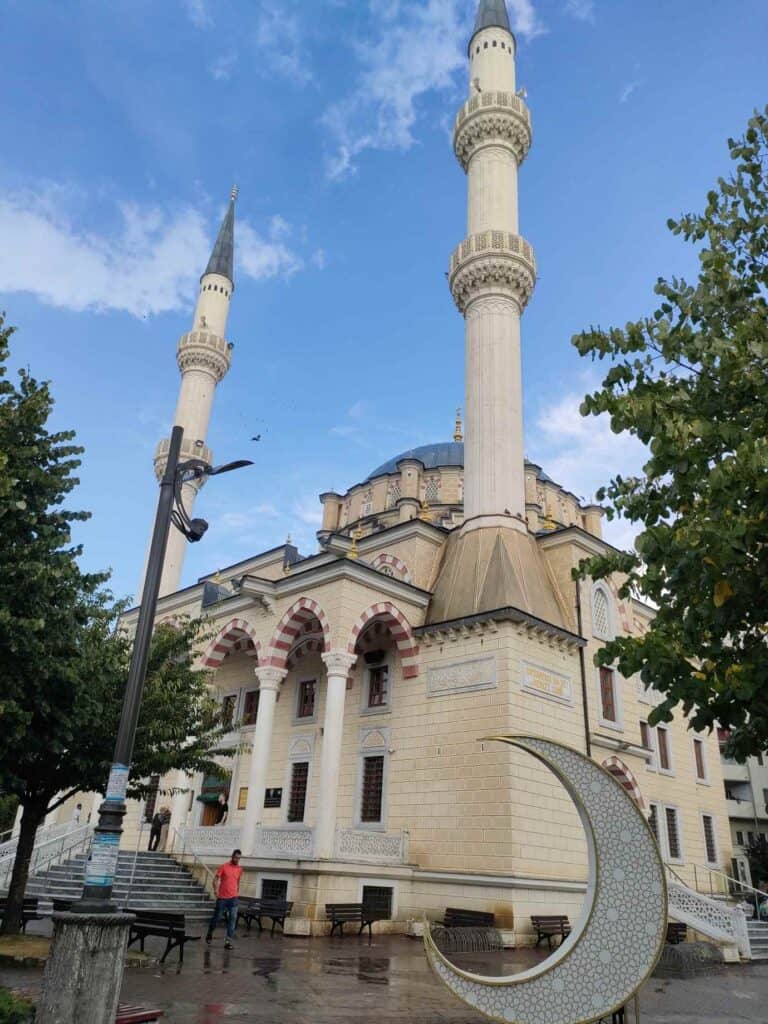
The New Bridge
The famous pedestrian central bridge that connects the Serb and Albanian parts of Mitrovica got a modern design in 2001 with French government support and has become a symbol of the division. An equal number of Albanians and Serbs were working on the renewal of the bridge.
The KFOR is in charge of maintaining peace and stability. Its car always stands at the foot of the bridge. Due to the close resemblance to the French Pont d’Austerlitz, it is often called the “Austerlitz Bridge”.
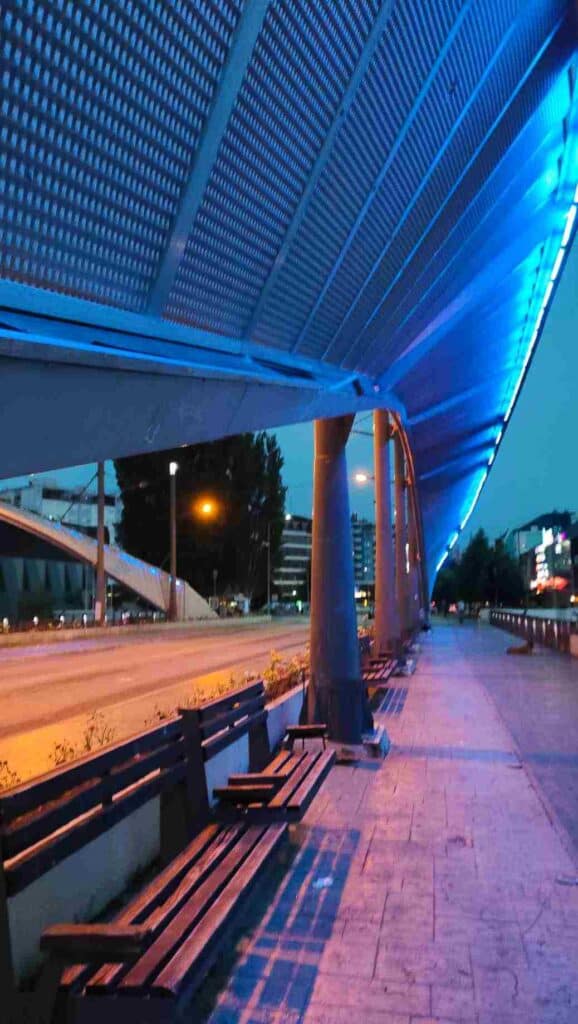
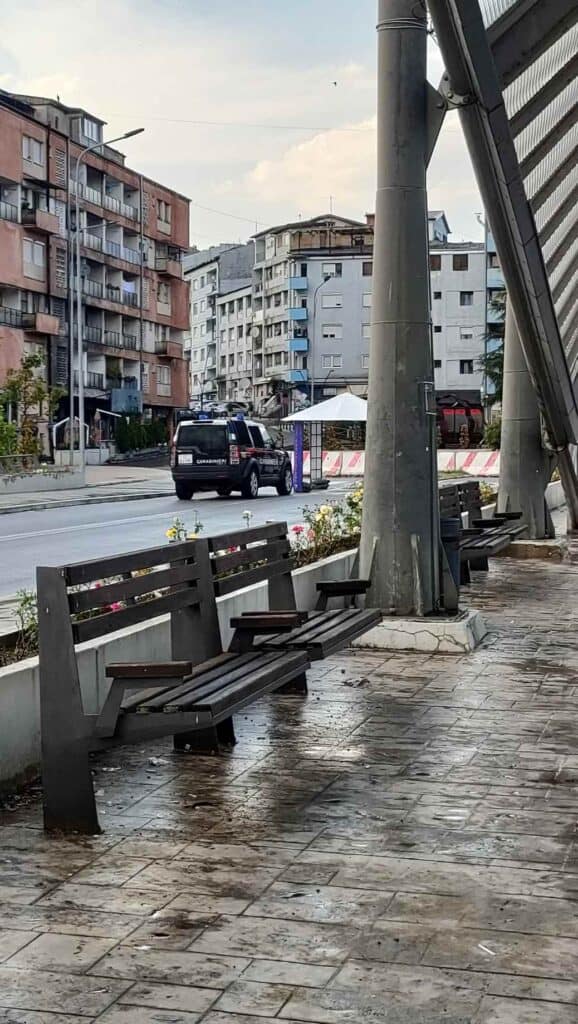
King Lazar’s statue- Serb side
As you cross the bridge, you interestingly find yourself on a pedestrian street that leads to a roundabout with the statue of Prince Lazar. North Mitrovica has a decidedly more communist feel than the rest of Kosovo – older cars and shabby buildings.
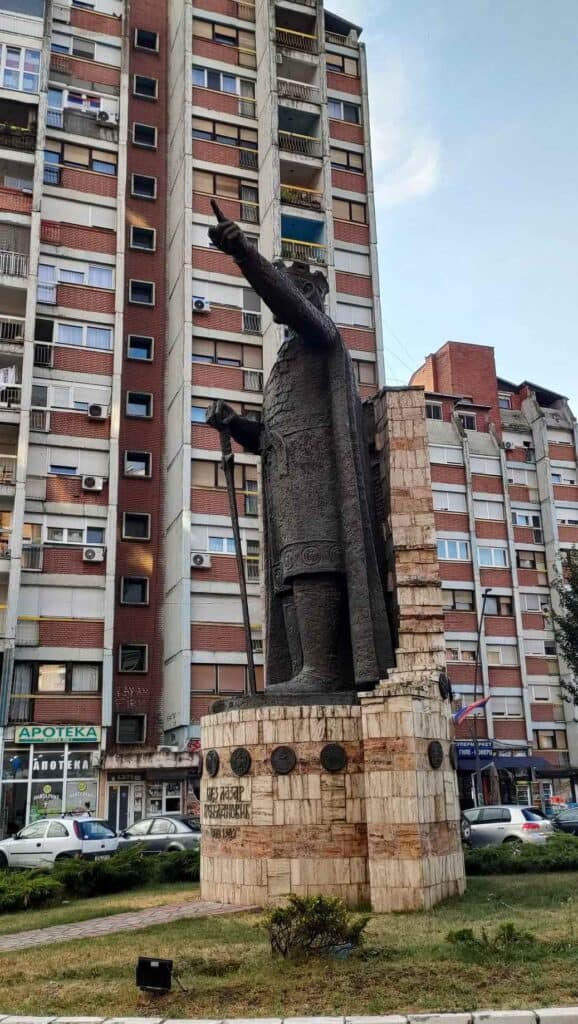
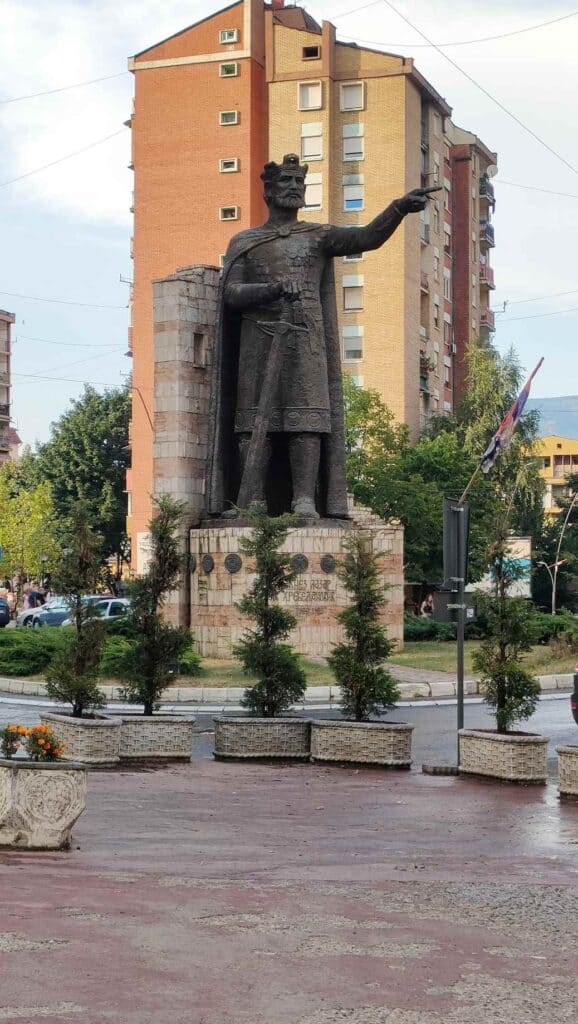
Serbian Orthodox Church of St Dimitrije
This impressive Church was built in 2005 on top of a hill with a great view of the city. Like all Serb Orthodox Churches, its interior is covered with colorful frescos. Mitrovica was most probably named after this Church.
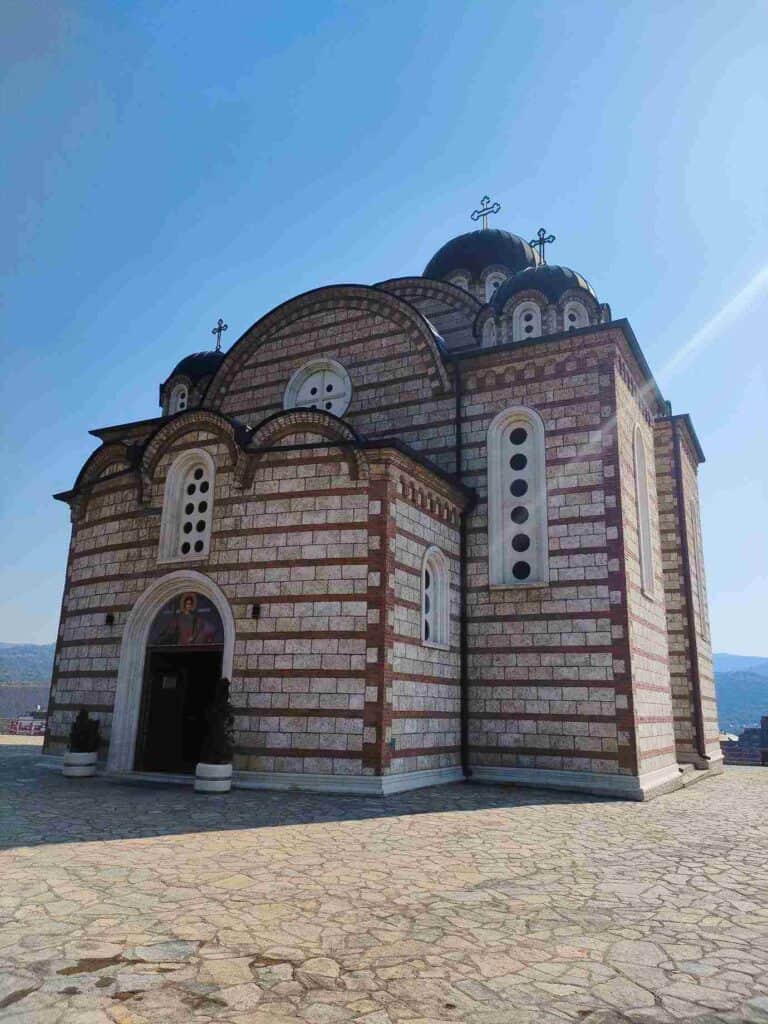
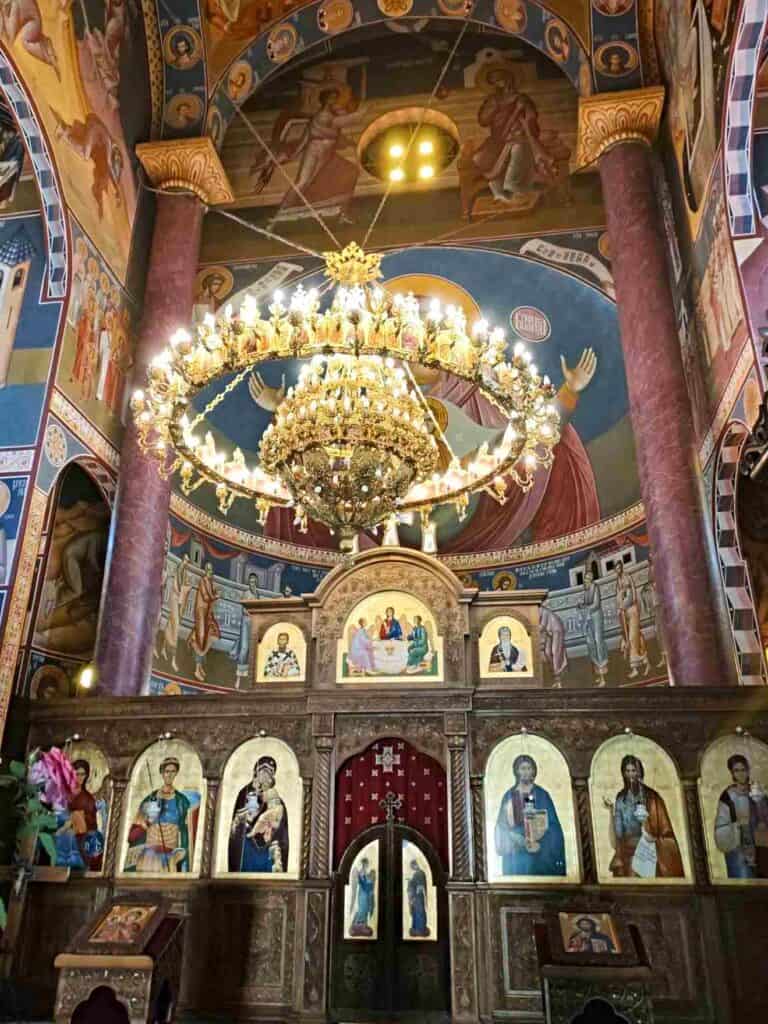
Miners’ Monument
The communist regime built the monument designed by Bogdan Bogdonović in 1973, referring to the city’s mining traditions that date back to Roman times. It was dedicated to the miners (Albanian and Serbian partisans) who lost their lives during WWII and stood as a witness to the peaceful coexistence of the two communities.
A viewing platform behind it offers a spectacular view of both sides of the city. It is Oónly a short walk from the Church of St.Dimitrija.
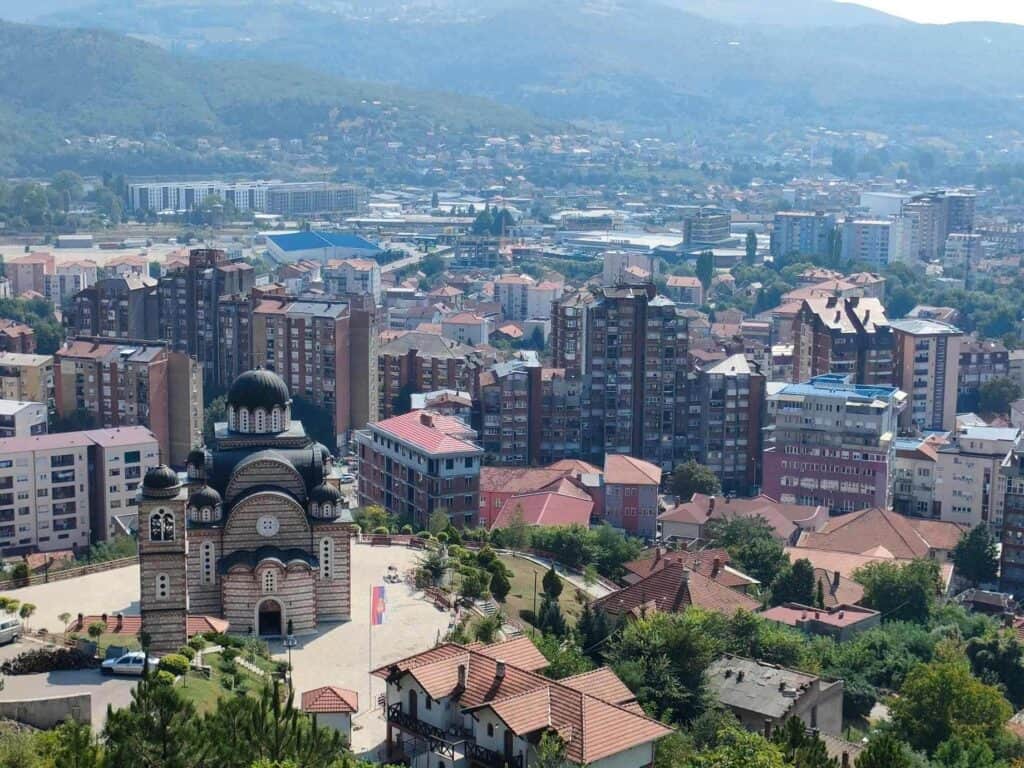
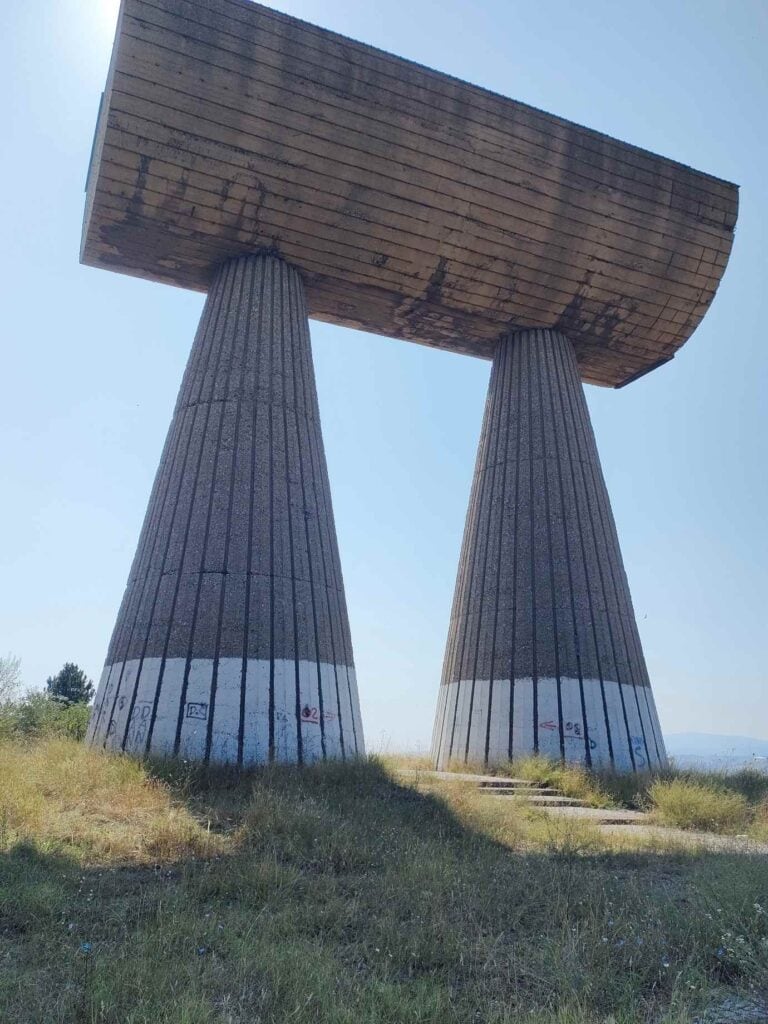
Zvečan fortress
If you don’t mind hiking, in another 45 minutes, you can reach the Zvečan fortress overlooking the Ibar River, allegedly one of the oldest Balkan medieval fortresses, although its exact date of construction is unknown.
How to get there?
Buses from Pristina arrive at the bus terminal of south Mitrovica. There are regular buses between north Mitrovica and Belgrade.
Where to eat in Mitrovica?
Restaurant Koha (near the New Bridge on the Albanian side)
Restaurant Ibri: This fantastic restaurant lies along the Ibri River outside the city center
Restaurant Missini Kitchen & Spa also lies along the river
Where to stay in Mitrovica?
South Mitrovica:
North Mitrovica:
North City Hotel is the most common place to stay at
Cental Apartmani – a place not to stay at!!!
The first time I wrote something like that and why in a blog post and not on a review on booking.com was because I was refused to stay there. I went there directly without booking and contacted the hostel via the number indicated at the entrance. I was asked to send a photo to prove I’m really there. Then I was sent away because I wanted to see the room in advance, saying that according to their policy, it was impossible. The answer was only a bye-bye smiley…..
Other posts about Kosovo
What to do in one day in Pristina
Read also the ultimate Kosovo travel guide + itinerary
Other posts about the Balkan
Travel guide and itinerary (4 days, 5 days and one week) Bosnia and Hercegovina
What to do in one day in Mostar
Sarajevo travel guide + itinerary (1 day, 2 days and 3 days)
It is not a particular monument that makes Mitrovica worth visiting, but rather to get insight into the life of Kosovo’s divided city and get a better understanding of the youngest country in Europe. Mitrovica doesn’t lack trendy restaurants and vibrant nightlife during the summer, and you can have a great time there. It is only one hour from Pristina, and you should definitely include it in your Kosovo itinerary.

